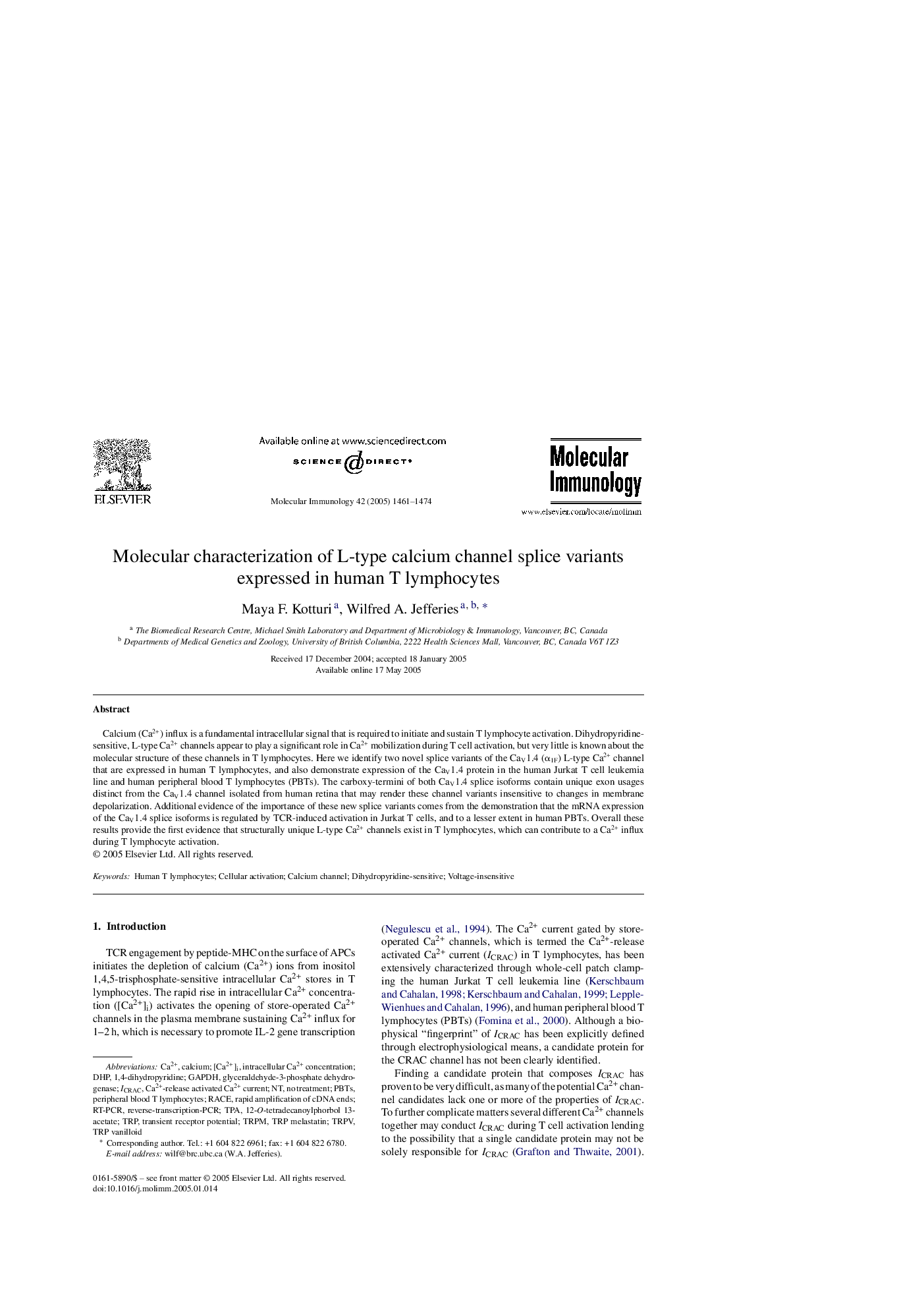| Article ID | Journal | Published Year | Pages | File Type |
|---|---|---|---|---|
| 9141679 | Molecular Immunology | 2005 | 14 Pages |
Abstract
Calcium (Ca2+) influx is a fundamental intracellular signal that is required to initiate and sustain T lymphocyte activation. Dihydropyridine-sensitive, L-type Ca2+ channels appear to play a significant role in Ca2+ mobilization during T cell activation, but very little is known about the molecular structure of these channels in T lymphocytes. Here we identify two novel splice variants of the CaV1.4 (α1F) L-type Ca2+ channel that are expressed in human T lymphocytes, and also demonstrate expression of the CaV1.4 protein in the human Jurkat T cell leukemia line and human peripheral blood T lymphocytes (PBTs). The carboxy-termini of both CaV1.4 splice isoforms contain unique exon usages distinct from the CaV1.4 channel isolated from human retina that may render these channel variants insensitive to changes in membrane depolarization. Additional evidence of the importance of these new splice variants comes from the demonstration that the mRNA expression of the CaV1.4 splice isoforms is regulated by TCR-induced activation in Jurkat T cells, and to a lesser extent in human PBTs. Overall these results provide the first evidence that structurally unique L-type Ca2+ channels exist in T lymphocytes, which can contribute to a Ca2+ influx during T lymphocyte activation.
Keywords
PBTs12-O-tetradecanoylphorbol 13-acetateDHPTRPMTrpTRPVICRACperipheral blood T lymphocytesRT-PCRGAPDHtPA1,4-DihydropyridineCa2+[Ca2+]ino treatmentrapid amplification of cDNA endsintracellular Ca2+ concentrationCellular activationHuman T lymphocytesRacetransient receptor potentialCalcium channelCalciumglyceraldehyde-3-phosphate dehydrogenase
Related Topics
Life Sciences
Biochemistry, Genetics and Molecular Biology
Molecular Biology
Authors
Maya F. Kotturi, Wilfred A. Jefferies,
